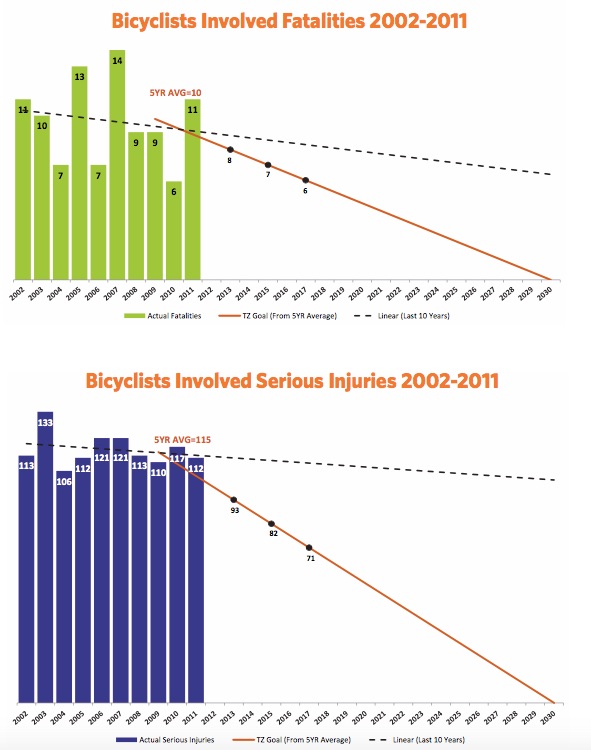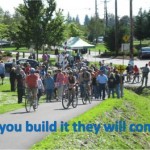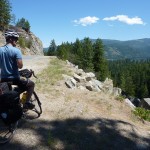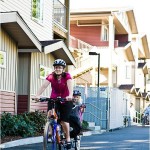Why is Washington State the #1 Bicycle Friendly State in the United States and not #1 in the World?
Last month’s news announcing Washington state as the #1 Bicycle Friendly State in the nation brought mixed reactions from observers, advocates, and agency staff. For some, it was recognition that Washington state has made important strides forward. For others – especially those that ride Washington state’s roads on a daily basis – it drew jeers as streets and roads still lack safe connections in every city or town across the state.
So what’s going on here? Aren’t we the best? Should’t we rest on our laurels?
The former Bogota Parks Director and now Director of the international organization 8 to 80 Cities, Gil Penalosa, provided some insightful comments about the myth of excellence and complacency at his May speech in Seattle. Writing for Next City, Josh Cohen offered an excellent recap on Penalosa’s talk:
“‘For a place like Seattle,’ Penalosa said,’the greatest barrier for getting people engaged is, the myth of excellence … You think you are great, but you are not.’ Seattle is good by American standards and ranked high in best cities lists as a result. Penalosa advised fighting complacency and taking Seattle from good to great. To do that, citizens need to benchmark themselves against the best in the world, not those already worse than them.”
As a reminder, Washington’s #1 ranking was achieved with a score of 66.3 out of 100. That’s a solid D grade, but in a competition amongst D and F students, someone’s going to win.
Indeed, consider some of the following:
- Only 0.6% of Washington state’s transportation budget for capital projects (aka building stuff) goes to biking and walking investments (reminder: write your legislators today to ask them to change this by making biking investments in the state funding package)
- Nationally, biking and walking traffic deaths are 20 times worse than in select Northern European countries.
- In the face of declining numbers of serious injuries and deaths involving motor vehicles, serious injuries and deaths by those who walk and bike in Washington state refuse to decrease in a significant manner.
It’s hard for Washington state to compete on the world stage with numbers like those.

While significant reductions in traffic deaths have occurred in Washington state, serious injuries and deaths of bicycle riders remain essentially flat. (image: WTSC, Target Zero)
Remember what this state ranking is about:
- Focused on the state aggregate – while helpful, the ranking doesn’t reflect as much on local work, except for overall bicycle ridership and safety numbers.
- Reflective of the work of the state transportation agency (in this case WSDOT), and of other state agencies, like the Washington Traffic Safety Commission and Washington State Transportation Commission. It doesn’t take into account local entities, like Spokane Regional Transportation Commission or Seattle Department of Transportation.
- Uses key laws and policies as a proxy for progress. Don’t have a 3-foot law? That counts against states. No Bicycle Plan? Another issue. There are many proxies that help the League judge the progress and relative ranking amongst states.
So what needs to be done?
It’s not rocket science to say that more investments in staff capacity at the state level, more investments in biking and walking projects, and more thoughtful transportation projects that consider all modes will help Washington increase its D grade on the Bicycle Friendly State Rankings, and hopefully help it achieve some sort of parity on the world scale.
Here are some initial steps that Washington Bikes will be advocating for in the remainder of 2015 and beyond:
- Grow investments at the state level. This is something that everyone needs to work on today: write your legislators! Funding and infrastructure remains Washington state’s lowest score in the rankings. This score is something we as a state can make immediate improvements on as the Washington state legislature is currently negotiating a multiyear, multibillion dollar transportation spending package. This week there is a very realistic chance that some sort of agreement could be reached on spending levels. It’s still unclear the fate of investments in biking in this package. Again, write your legislators today.
- Grow staff capacity for bicycling and update the bike/ped plan at WSDOT. The Washington State Department of Transportation (WSDOT) should build upon its past successes by increasing staff capacity for planning, engineering, and implementation of solutions that make bicycling and walking safer and more convenient. Additionally, so much has changed in bike/ped planning since the last bicycle and pedestrian plan was released in 2008. Then, sharrows were still seen as relatively cutting edge. We’re past that and without so much as an update to the plan by WSDOT since then, much needs to change before the multimodal planning at WSDOT begins to address bicycling in earnest.
- Grow bicycle and pedestrian safety focus at the state level. Outside of the hugely successful Safe Routes to School programs, safety education initiatives for bicycling at the state level are conspicuously absent. Deeper engagement of the Cooper Jones Safety Committee by the Washington Traffic Safety Commission and increased focus on data collection agency-wide at WSDOT could help.
These are not exhaustive, nor are they even the most ambitious – they are items that are tangibly in the hands of WSDOT and the Washington State Legislature.
Take action today
Right now, Washington state continues to deny large swaths the freedom to get around safely and affordably on a bike. Let’s not get complacent with our #1 status, remind your legislators that they can make real progress by making biking and walking investments today.




